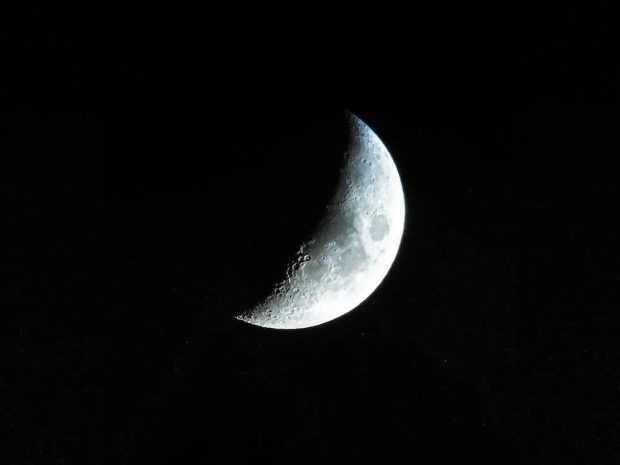

PTI, Sep 15, 2023, 12:49 PM IST

Representative image (source: Pexels)
Scientists analysing the remote sensing data from India’s Chandrayaan-1 lunar mission have found that high energy electrons from the Earth may be forming water on the Moon.
The team led by researchers from the University of Hawai’i (UH) at Manoa in the US discovered that these electrons in Earth’s plasma sheet are contributing to weathering processes — breaking down or dissolving of rocks and minerals — on the Moon’s surface.
The research, published in the journal Nature Astronomy, found that the electrons may have aided the formation of water on the lunar body.
Knowing the concentrations and distributions of water on the Moon is critical to understanding its formation and evolution, and to providing water resources for future human exploration, the researchers said.
The new finding may also help explain the origin of the water ice previously discovered in the permanently shaded regions of the Moon, they said.
Chandrayaan-1 played a crucial role in the discovery of water molecules on the Moon. The mission, launched in 2008, was the first Indian lunar probe under the Chandrayaan programme.
Solar wind, which is composed of high energy particles such as protons, bombards the lunar surface and is thought to be one of the primary ways in which water has been formed on the Moon.
The team investigated the changes in surface weathering as the Moon passes through Earth’s magnetotail, an area that almost completely shields the lunar body from solar wind but not the Sun’s light photons.
”This provides a natural laboratory for studying the formation processes of lunar surface water,” said Shuai Li, an assistant researcher at the UH Manoa School of Ocean.
”When the Moon is outside of the magnetotail, the lunar surface is bombarded with solar wind. Inside the magnetotail, there are almost no solar wind protons and water formation was expected to drop to nearly zero,” Li said.
Li and co-authors analysed the remote sensing data that were collected by the Moon Mineralogy Mapper instrument, an imaging spectrometer, onboard India’s Chandrayaan 1 mission between 2008 and 2009.
They, specifically, assessed the changes in water formation as the Moon traversed through Earth’s magnetotail, which includes the plasma sheet.
”To my surprise, the remote sensing observations showed that the water formation in Earth’s magnetotail is almost identical to the time when the Moon was outside of the Earth’s magnetotail,” said Li.
”This indicates that, in the magnetotail, there may be additional formation processes or new sources of water not directly associated with the implantation of solar wind protons. In particular, radiation by high energy electrons exhibits similar effects as the solar wind protons,” he explaned.
This finding and the team’s previous study of rusty lunar poles indicate that the Earth is strongly tied with its Moon in many unrecognised aspects, the researchers added.
Chandrayaan 1 was launched by the Indian Space Research Organisation (ISRO) in October 2008, and operated until August 2009. The mission included an orbiter and an impactor.
India successfully landed Chandrayaan-3 mission, with a rover and a lander, near the Moon’s enigmatic south pole last month, becoming the first country to do so.
Udayavani is now on Telegram. Click here to join our channel and stay updated with the latest news.




Is AI making us stupider? Maybe, according to one of the world’s biggest AI companies


ISRO develops 10-tonne propellant mixer for solid motors


Military gadgets that can be used by civilians jostle for space at Aero India 2025


Hubballi startup develops AI-powered ‘Chakra’ net trap to neutralize enemy drones


HAL’s Hindustan Jet Trainer HJT-36 is now renamed as ‘Yashas’


Devil teaser: Darshan promises ‘mass’ action!


Daali Dhananjaya ties the knot with Dhanyatha! Here’s what the newlyweds said


Siddaramaiah is our leader, no need to ‘misuse’ his name: Karnataka Deputy CM Shivakumar


Veteran Telugu actress Krishnaveni, who introduced NTR to films, dies at 100


Namma Sante: Artistic magic crafted from cuttlefish bone on display
You seem to have an Ad Blocker on.
To continue reading, please turn it off or whitelist Udayavani.